Earlier this year, the area around the city of Walbrzych, in southwestern Poland became very popular. In August, two explorers announced the discovery of a long lost armored nazi train. It was reported that the train was buried in a railway tunnel, on a track between Wroclaw and Walbrzych. The news revived a legend of a train full of gold and valuables that the Nazis reportedly hid in the Owl mountains in 1945. To make the story more interesting, Polish authorities confirmed this discovery, without exactly specifying what was really found inside the tunnel.
Suddenly, the quiet town of Walbrzych attracted huge numbers of treasure hunters, reporters and tourists. The tunnel where the train was found is part of a vast network of interconnected tunnels under castle Ksiaz, that lays on a hilltop near Walbrzych, in a protected area called “Ksiaz Landscape park”.
The castle and its history is attractive enough even without the nazi gold train. Ksiaz castle has a story of its own.
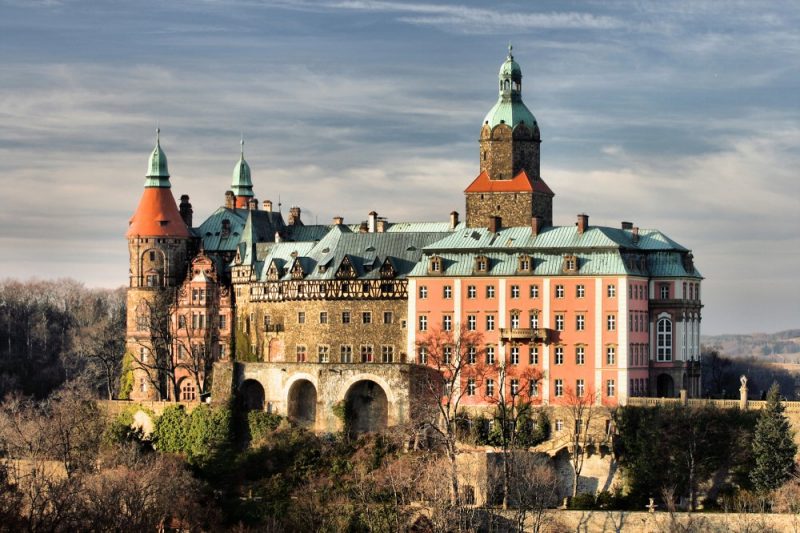
It was built in 1288-1292 under Bolko I the Strict. After a long period of turmoil, in the year 1509 Konrad I von Hoberg (from 1714: Hochberg) obtained the castle hill. The Hochberg family owned the castle until the 1940s. Hans Heinrich XV, Prince of Pless and his English wife, Mary-Theresa Olivia Cornwallis-West (Princess Daisy), were the last owners of Ksiaz. After they fell into debt, in 1941, the castle and the lands were seized by the Nazi government. Immediately after seizing, architect Hermann Giesler was assigned to reconstruct of the castle. It was first adapted to serve as a management building for state-owned railways (Deutsche Reichsbahn). Later castle Ksiaz or “Schloss Fürstenstein” in german, became part of a secretive project called “Project Riese” (German for “giant”).
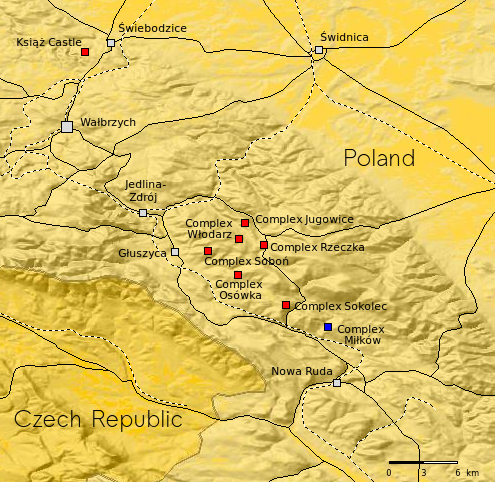
Ksiaz was in the centre of this nazi construction project. They were planning to build 7 underground facilities in the Owl Mountains in occupied Poland. The project wasn’t finished because soon the war ended. The purpose of Project Riese is unknown. There is very little documentation that can clarify the function of these structures. According to some sources, all of the structures were part of massive Führer Headquarters and an important command center. Other theories suggest underground factories or even a secret nuclear laboratory.
Many of the decorative elements in the castle were stripped down and destroyed, they weren’t suitable for the new function of the castle. New staircases and elevator shafts were built making the building more suitable for evacuation. But the most serious work was done below.
There are two levels of tunnels. The first is 15 m underground and was accessible from the castle by a lift and a staircase and also by an entrance from the gardens. The tunnel is reinforced by concrete and leads to an elevator shaft hidden 15 m under the courtyard, the direct way from the castle to the main underground complex. The second level of tunnels is 53 m under the courtyard. Four tunnels were bored into the base of the hill: 1. (85 m), 2. (42 m), 3. (88 m), 4. (70 m). The complex also contains 4 big chambers.
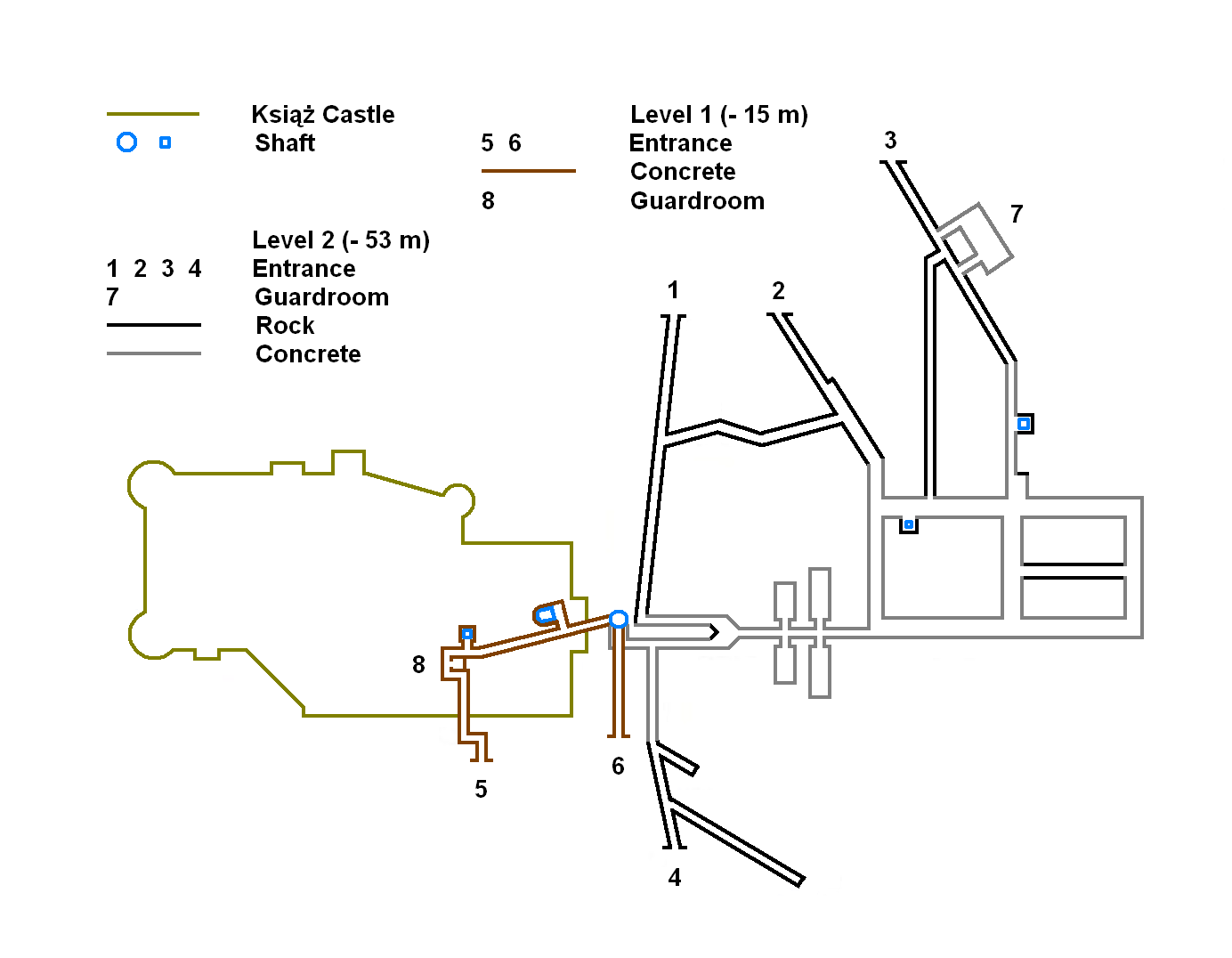
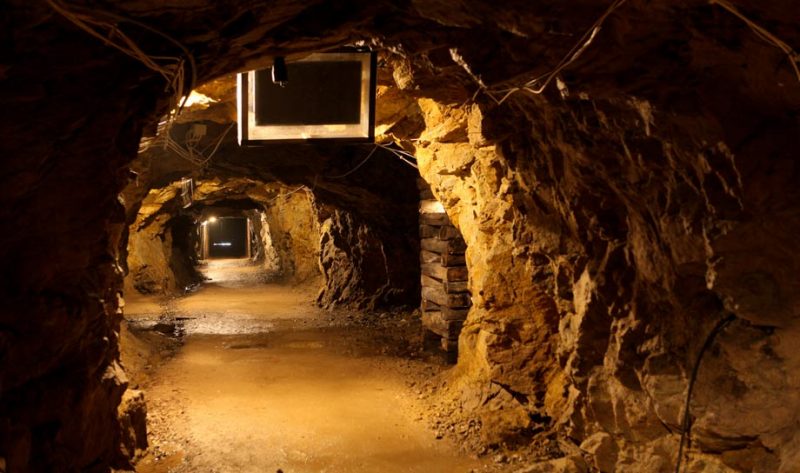
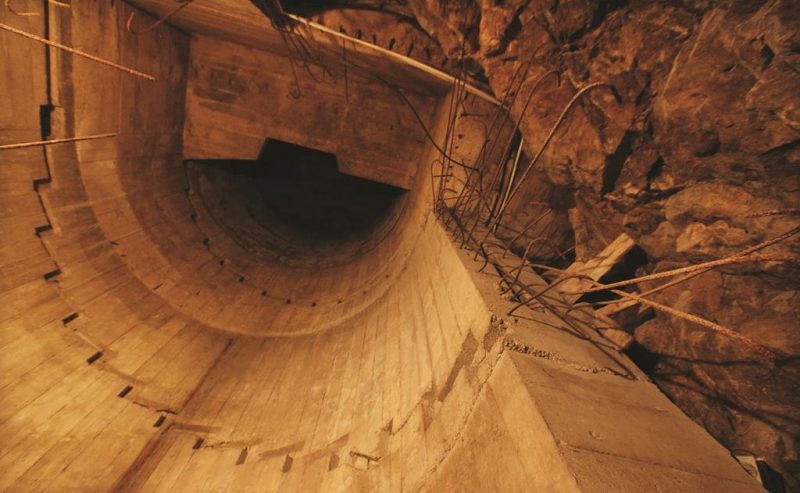
All of the construction work was done by Jewish prisoners from Gross-Rosen concentration camp. They were organized into labor camps (called Arbeitslager Riese) in the vicinity of the tunnels. There were 13 000 prisoners that worked on this projects, and many of them lost their lives because of disease, malnutrition, exhaustion, dangerous underground works, and the harsh treatment by German guards.
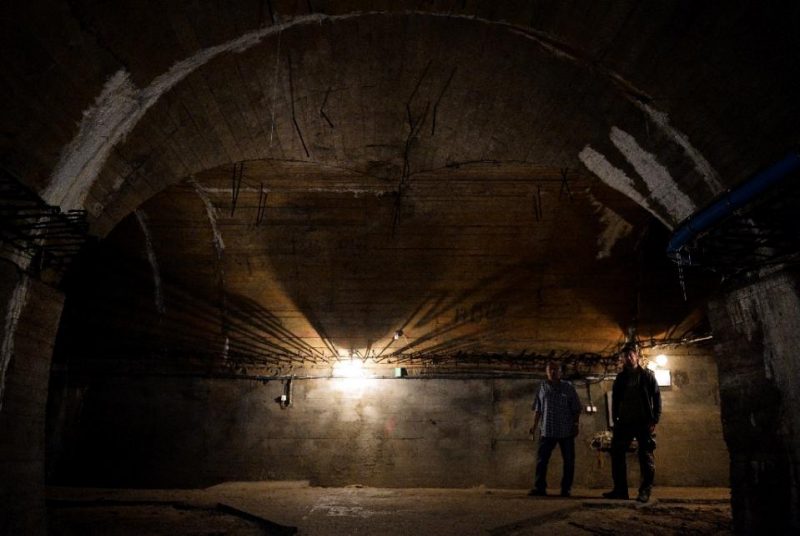
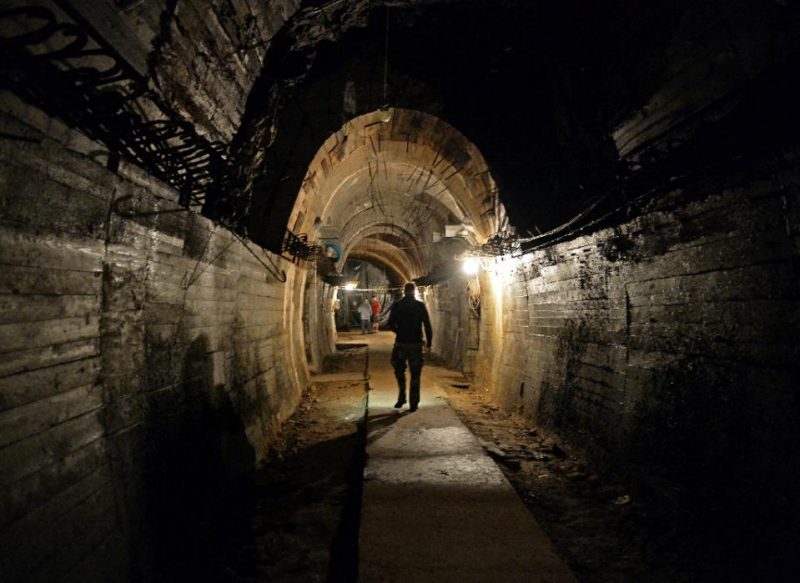
Source: wikipedia, wcfcourier, ancient-origins, hamodia, zuk-sa, yahoo